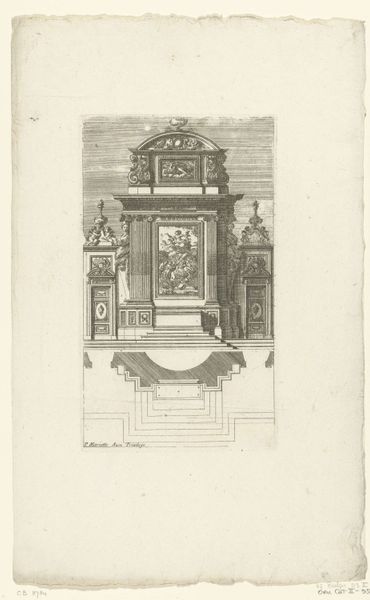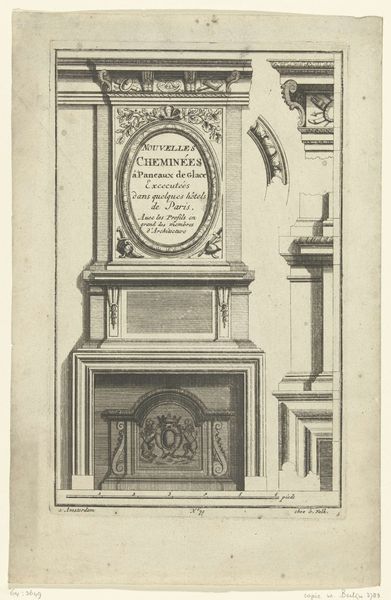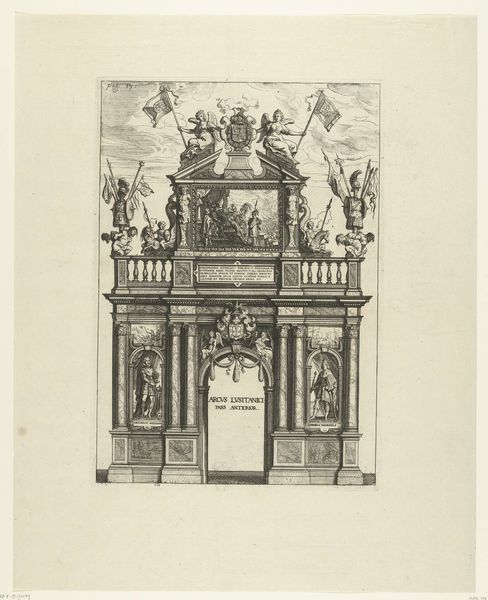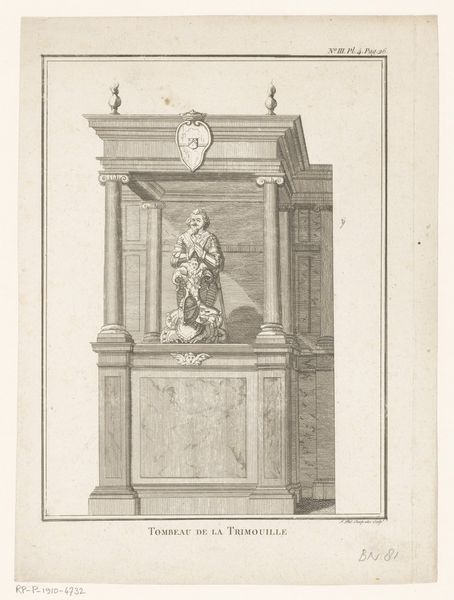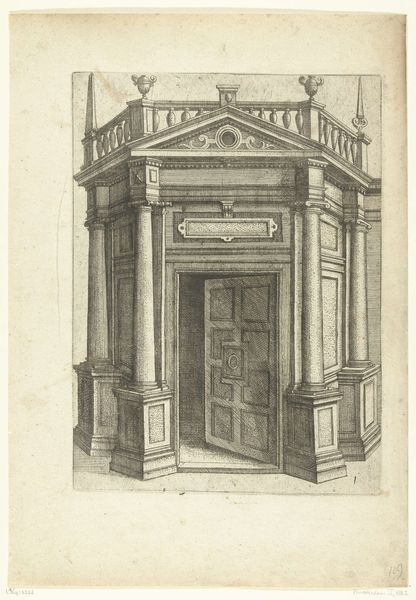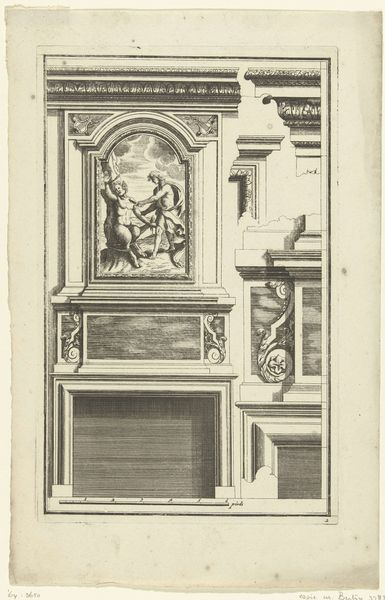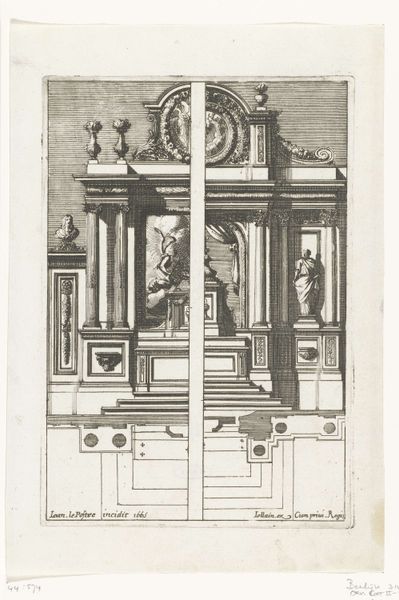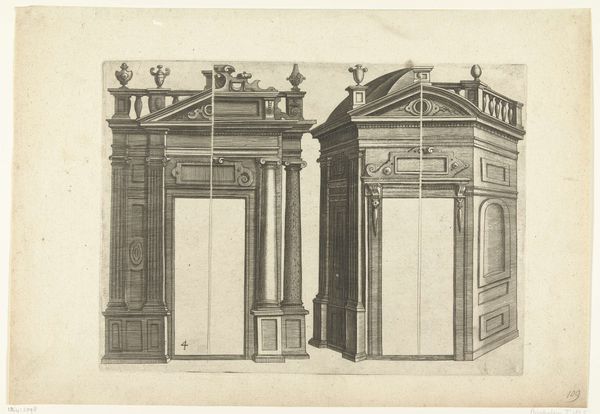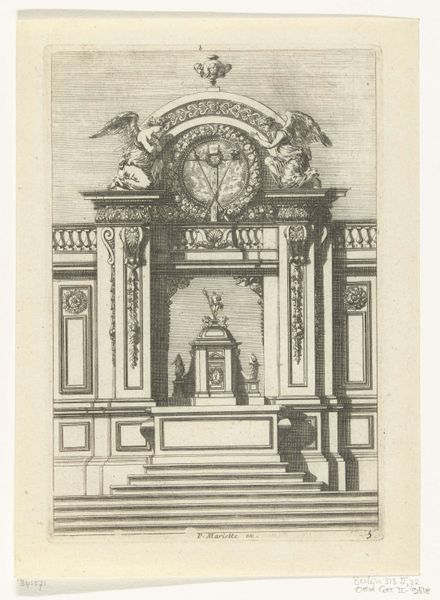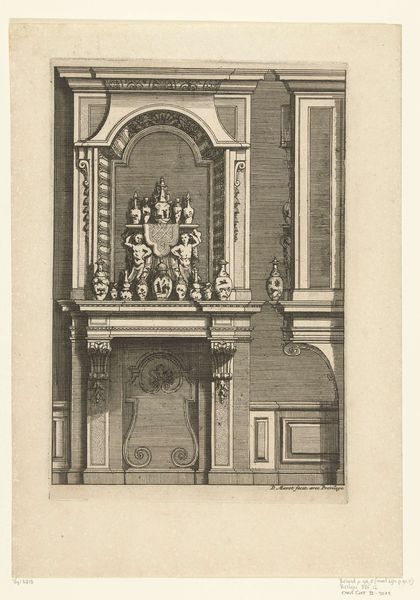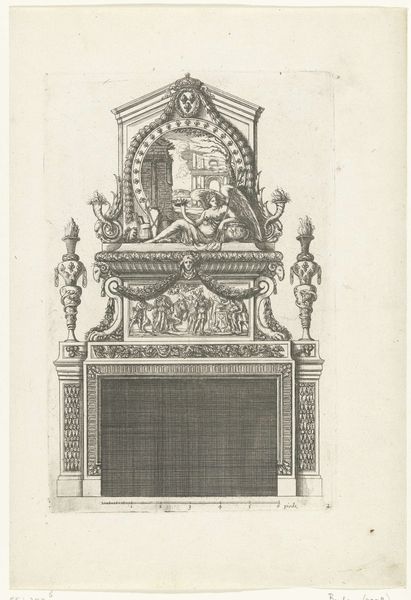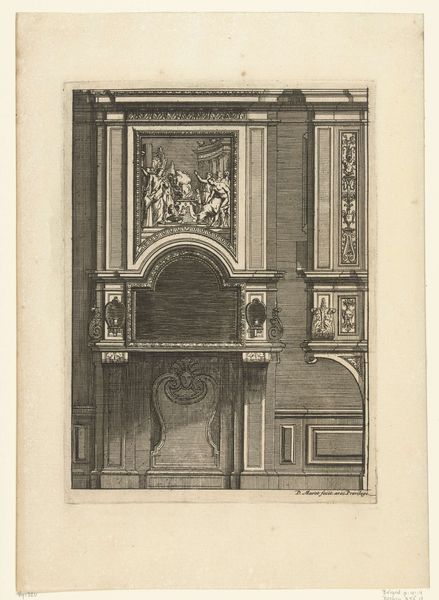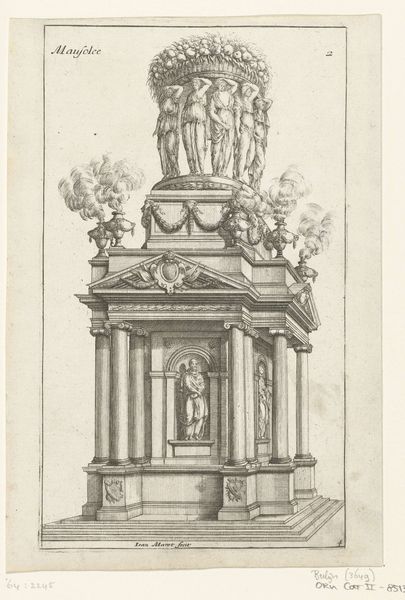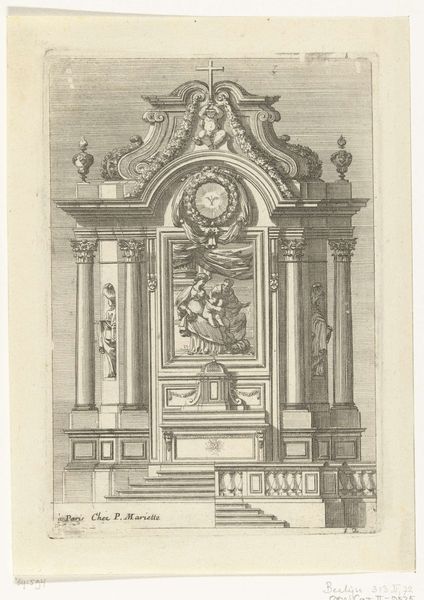
Driehoekige waterput met koepel op klein plein c. 1574
0:00
0:00
print, engraving, architecture
# print
#
perspective
#
11_renaissance
#
cityscape
#
italian-renaissance
#
engraving
#
architecture
Dimensions: height 142 mm, width 202 mm
Copyright: Rijks Museum: Open Domain
Editor: This engraving, "Driehoekige waterput met koepel op klein plein," created around 1574 by Johannes or Lucas van Doetechum, depicts a triangular well with a dome, situated in what appears to be a small piazza. The perspective is quite striking, giving a sense of depth and spaciousness. What stands out most is the imposing yet almost dreamlike quality; the well becomes more of a monumental temple than a functional object. What do you make of this piece? Curator: Indeed. Note how the well, this source of life, is elevated almost to a religious symbol. Think about the history of the well as a communal space, a site of gathering, conversation, even ritual. By framing it with classical architectural elements—columns, dome, symmetry— the artists aren't simply depicting a practical water source, they’re encoding its symbolic importance. Does the triangular shape resonate with you in any way? Editor: It's intriguing! Maybe it's a subtle nod to the Holy Trinity? Curator: Perhaps. And look at the emptiness of the surrounding square. It invites contemplation. Consider also the architectural precision – is it idealized, or meant to capture a specific place? The human presence is conspicuously absent. Editor: I see what you mean; the emptiness almost amplifies the symbolic weight you mentioned. The more I look, the more the well transforms from a mere object to something that’s almost…allegorical. Curator: Exactly. And these echoes across centuries and cultures enrich our understanding of shared human experiences. Editor: This has given me so much to consider – how something as simple as a well can be so layered with meaning! Curator: Precisely, it reveals how deeply humans infuse their surroundings with meaning and memory.
Comments
No comments
Be the first to comment and join the conversation on the ultimate creative platform.

